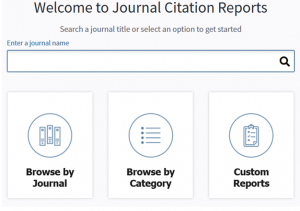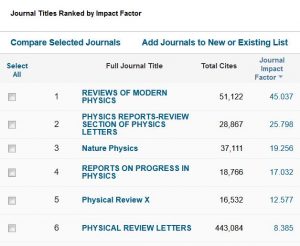4 Evaluating a Journal
Evaluating journals is important when you are assessing articles and when deciding where to publish research.
What to look at when evaluating journals:
- Journal Impact Factor – a metric measuring how much impact a journal has
- Journal publisher – the organization or company that publishes the journal
- Journal editorial board – the researchers who are editors for the journal
Journal Impact Factor
The Journal Impact Factor (JIF) is a measure of the impact of a particular journal in its field. The Journal Impact Factor is defined as the number of citations received in an a year by articles published in that journal during the two preceding years, divided by the total number of “citable items” published in that journal.
Journal Impact Factor is useful to get an understanding of the importance of a journal in it’s field, but it is not a measure of quality and it is not the only factor you should consider when evaluating a journal. A journal with a higher Impact Factor is not necessarily “better” than a journal with a lower Impact Factor.
Calculation:
2018 Impact Factor = A/B
Finding Impact Factor
Journal Impact Factors can be found in the Clarivate Analytics Journal Citation Report. You can search by journal title or browse by subject area


Caveats:
- Impact Factor is only comparable for journals in the same category
- Journals with a general focus have higher Journal Impact Factors than journals with a specialized focus
- Impact Factor is higher for review journals, as review articles get more citations
- Journals can “game the system” to increase their Impact Factor
Journal Publisher
Many journals are published by large academic publishers (like Elsevier or Springer Nature) or by research societies and professional organizations. Look for journals published by societies or organizations that are important to your field.
Be cautious of journals published by organizations or publishers you have never heard of. When in doubt, look up the publisher.
Journal Editorial Board
The editorial board of a journal is made up of researchers relevant to that journal. When evaluating a journal, take a look at the editorial board to see if it includes any researchers whose names or reputations you recognize.
Think. Check. Submit.
Think. Check. Submit. is a resource that can help you evaluate journals when your publishing research. Use their checklist to evaluate a journal, or watch the video below:
What about Predatory Publishers?
Evaluating journals also helps you avoid predatory publishers.
Predatory publishing is covered in Section IV

